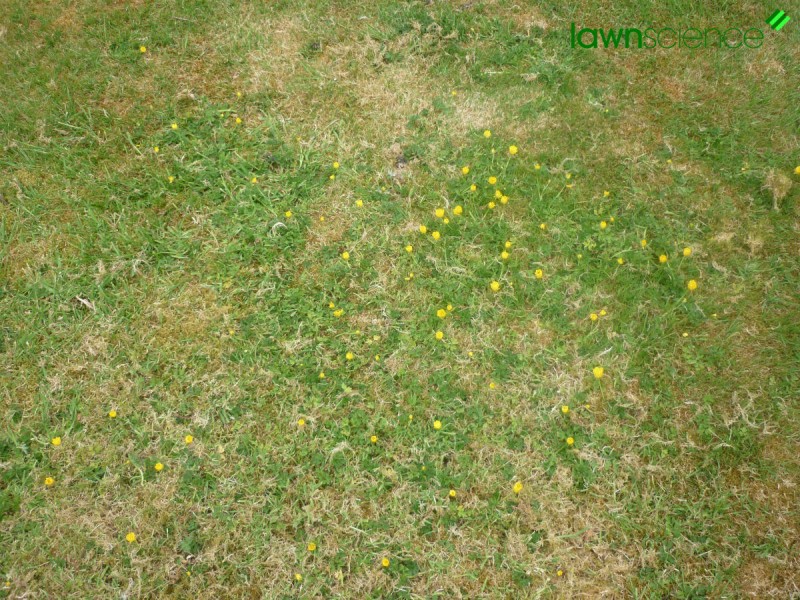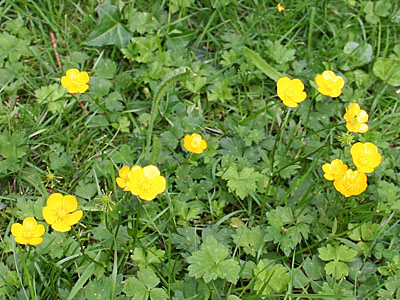
Creeping Buttercup
Creeping buttercup’s competitive growth crowds out other plants, especially in wet soils. One plant can spread over a 40 square foot area in a year. Creeping buttercup also depletes potassium in the soil and so can have a detrimental effect on surrounding plants. Because creeping buttercup can tolerate heavy, wet soils, it can be a particularly bad problem on well-watered lawns, wet meadows and poorly drained pastures.
Perennial with short swollen stems and creeping stolons that root at the nodes. Can be distinguished from other buttercup species such as tall buttercup (Ranunculus acris) by the creeping stolons. Can grow up to one foot tall but are often shorter in mowed areas. Leaves are dark green with light patches and are divided into three toothed leaflets, the central leaflet on a stalk. Pale patches on the leaves distinguish creeping buttercup from similar looking plants such as hardy geraniums. Basal leaves have long petioles (stalks), leaves higher up the plant have shorter or no petioles. Leaves and stems are somewhat hairy. Flowers usually have five (sometimes ten) glossy, bright yellow petals and grow singly on long grooved stalks.

